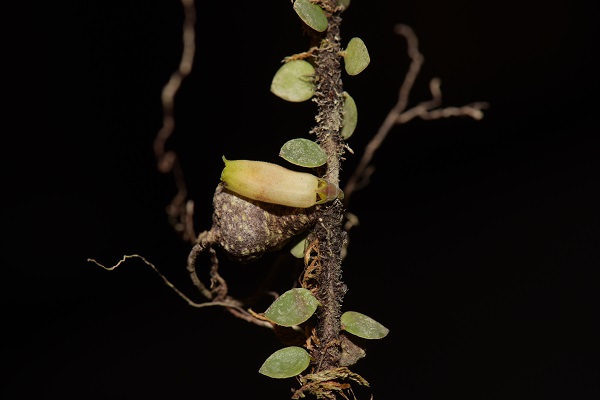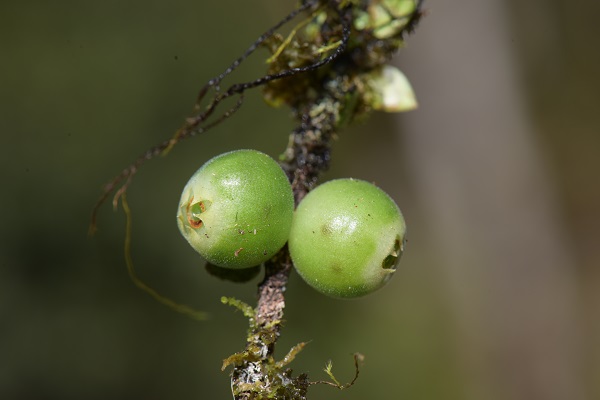Agapetes comprises approximately 100 currently recognized species, most of which are distributed in the Asian subtropical monsoon region. In China, 57 species and two varieties are currently recognized.
During floristic exploration of Mêdog, Tibet, researchers from Xishuangbanna Tropical Botanical Garden (XTBG) collected some unknown Agapetes materials of an interesting plant with fruits from two locations in the understory of a primeval subtropical forest. After careful morphological comparison, they confirmed the plant represents a new Agapetes species and published it in Taiwania.
The researchers named the new species as Agapetes huangiana in honor of Prof. HUANG Suhua (1938–2020), a female botanist in Yunnan University, who has made great contributions to the taxonomic study of Agapetes in China.
Agapetes huangiana is an evergreen epiphytic shrub. It is morphologically similar to A. guangxiensis and A. epacridea in having spirally alternate leaves with short pedicels and ovate blades, and branchlets densely covered with spreading setae, but can be clearly distinguished. It has pure white corolla tubes; the anthers without spurs and the indumentum of their leaf blades are also different.
Agapetes huangiana is known only from Beibeng Township of Mêdog County, in Southeast Xizang, Southwest China. It is usually epiphytic on the trees of subtropical evergreen broadleaved forest at elevations of 1390–2100 m.
“During our survey, only two populations of Agapetes huangiana were encountered, and these two localities are near the roadside. Due to the continuous improvement of road infrastructure, and the continuous development of tourism, this species is assessed as vulnerable (VU) following IUCN guidelines,” said TAN Yunhong of XTBG.
Contact
TAN Yunhong Principal Investigator
Center for Integrative Conservation, Xishuangbanna Tropical Botanical Garden, Chinese Academy of Sciences, Menglun, Mengla, Yunnan 666303, China
E-mail: tyh@xtbg.org.cn

Flowering branch of Agapetes huangiana. (Image by YANG Bin)

Flowering branch of Agapetes huangiana. (Image by YANG Bin)

Mature berries of Agapetes huangiana. (Image by YANG Bin)



